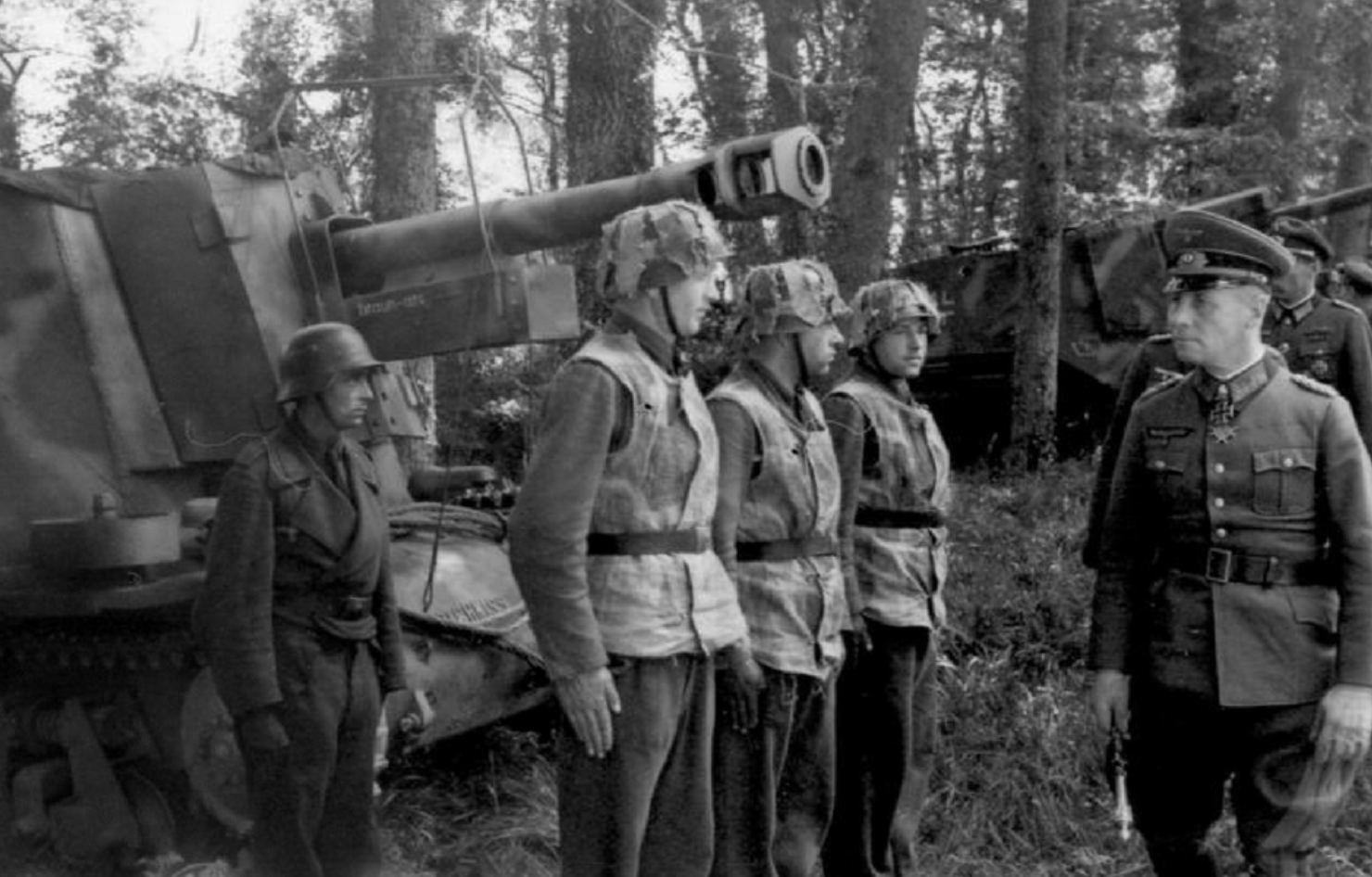This was one of the worst assignments in World War II

Rommel inspecting 21st Panzer Division in May, 1944. Image: German Federal Archives.
SUMMARY
Often, the worst place to be in a war is on the losing side, even if you have the moral high ground. But spare a thought for the conscripts of German static divisions at Normandy. Germany forced them into the war. To fight on behalf of the same fascists who'd conquered their own country. And they undersupplied them. Then, they used them as essentially human speed bumps against Allied advances.
And at D-Day, two of them bore the brunt of the Allied attack. And then one of them saw a panzer attack relieve them only for German forces to abandon them, again, to capture or death.
The static divisions
Germany's static divisions occupy a muddy place in history. Some members volunteered to fight for fascism, and screw those guys. But many were older or younger German conscripts or even Europeans from conquered countries forced to fight for Germany. These men were as much victims of the Nazi war machine as many others, but then they did fight for Germany, sometimes even after they could've surrendered safely.
So, muddy. Some were villains, some were victims, and all of them got screwed.
That's because the static divisions were the lowest of the low when it came to resource requests. They often had few vehicles and a motley mix of captured equipment. So the average static soldier had to walk everywhere he needed to go rather than ride with the blitzkrieg, hence the name static. And in a serious fight, they couldn't fall back or withdraw.
So commanders ordered them to fight, typically to the last man, to give a chance for more mobile forces to reach better fighting positions.
So they were ill-equipped human speed bumps. Germany did try to shine the turd, sometimes by referring to them as "fortress" units. You know, because fortresses don't typically move but are relatively easy to defend.
But then, fortresses typically had top-quality weapons and sufficient vehicles to move their defenders around.
In an Imperial War Museums comparison between German army field divisions, Luftwaffe parachute divisions, and static divisions, IWM wrote:
The more numerous ‘static’ coast divisions were much less effective. These had little in the way of transport, and were merely expected to man fixed defences and hold their ground. They contained older troops, the medically unfit, and men recovering from wounds. Some also had contingents of Osttruppen, conscripts or volunteers from the Soviet Union and other eastern territories occupied by Germany. Many were former Soviet POWs and were generally regarded as having little value.
When it came to D-Day, two static divisions received tough Allied attacks, and the 716th Static Division soldiers got the worst of it.
The 716th Static Division
When the Allies came ashore, nine divisions with months of preparations, naval superiority, and air superiority attacked three divisions, two static and one field infantry division. Only at Omaha Beach did a group of infantry from the 916th Grenadier Regiment seriously threaten to stop the Allied advance.
But with two static divisions taking the brunt of the hit, there weren't enough mobile forces to push the Americans back even there. And so the Allied waves came on, overpowering German and other Axis defenders.
For the 716th Static Division, that meant they were quickly surrounded and fighting for mere survival.
But they did hold on until the afternoon when a sudden, concentrated counterattack by the 192nd Panzergrenadier Regiment made it all the way to the beach...and temporarily brought real firepower to defend the 716th.
But the German counterattack had worked by exploiting a seam in the Allied assault between Canadian and British forces. If the tanks turned left or right, they would expose their sides to naval gunfire and their rears to one Ally or another.
And so the old men, young boys, and conscripts of 716th saw a panzer regiment come to their rescue...and then turn around to head right back. The panzers took heavy losses in their short beach assault. As Dr. Robert Citino says in an article on D-Day:
[The panzer] regiment ended this day of drama slinking back to the south and, incidentally, leaving the remnants of 716th Static Division to their unhappy fate.
The 716th suffered mightily and limped out of Normandy. It was so badly battered that the Germans pulled it from the line on July 10. From 1944 to 1945, it was reconstituted and beaten multiple times before surrendering a final time in May 1945.
Being the least trained, least mobile, and worst-supplied unit type on the front is a terrible job to have.
SHARE
